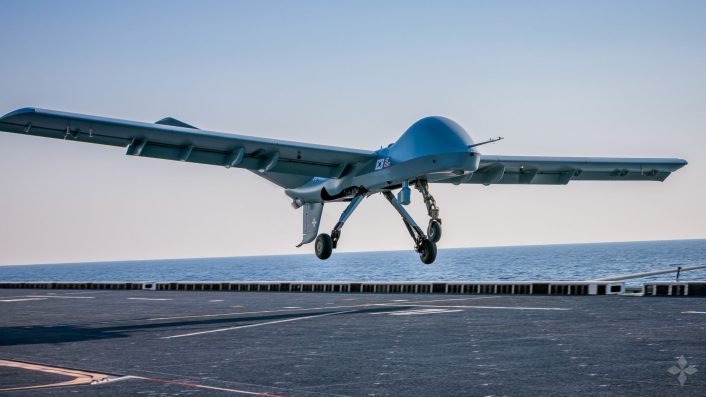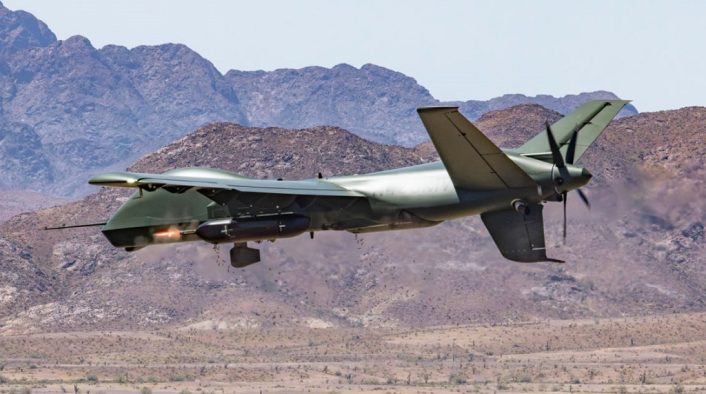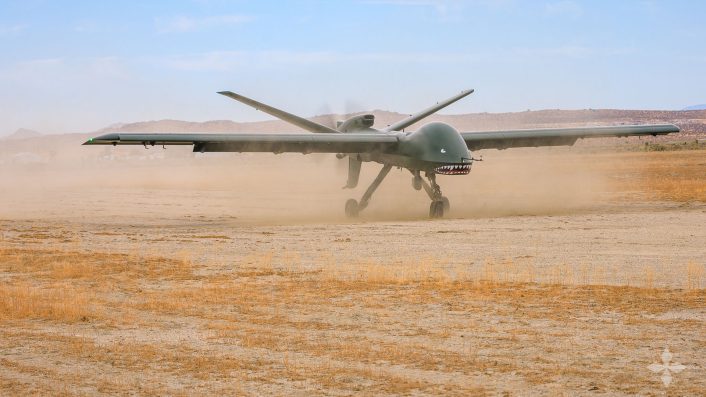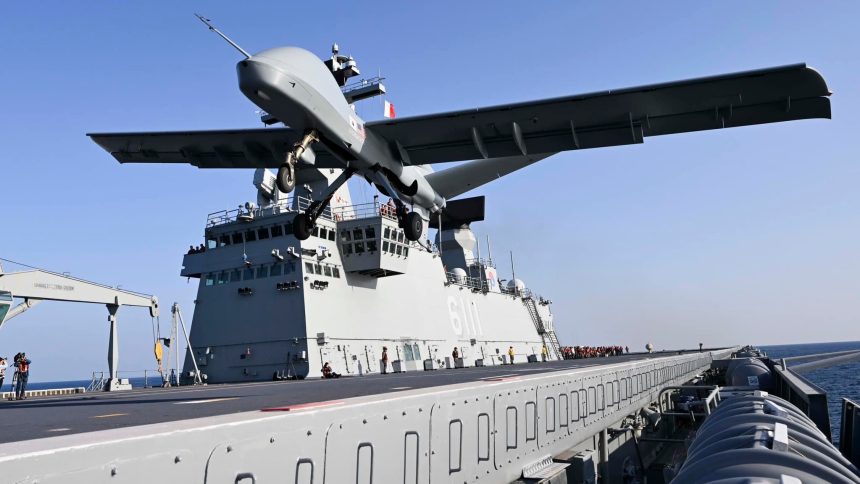GA-ASI and Hanwha Aerospace signed a deal to co-produce the Gray Eagle STOL, following the recent cooperation on joint testing in South Korea.
General Atomics Aeronautical Systems, Inc. (GA-ASI) and South Korea’s Hanwha Aerospace have signed an agreement on Oct. 14, 2025, to jointly develop and produce the Gray Eagle Short Takeoff and Landing (GE STOL) unmanned aircraft system (UAS) in South Korea. The deal marks a significant expansion of U.S.–Korean defense industrial collaboration, which follows the joint testing of the UAS last year and a cooperation agreement earlier this year.
According to GA-ASI’s press release, the partnership will see the two companies begin co-development and co-production immediately, with the first flight scheduled for 2027 and first deliveries expected in 2028. The company says the aircraft will be offered to global customers, including the U.S. Department of Defense and South Korea’s Ministry of National Defense, and will be produced through a shared manufacturing effort between the United States and South Korea.
Although the Gray Eagle STOL was tested on the Republic of Korea Navy’s amphibious landing ship Dokdo, it is unclear if the service will adopt it. According to Breaking Defense, the two companies are currently in talks with potential customers.

From Concept to Co-Production
Under the terms of the agreement, GA-ASI and Hanwha will design and build a production-representative Gray Eagle STOL. The work will leverage the experience both companies gained through joint testing activities in 2024. The new UAS will be assembled in a newly established facility in South Korea, while GA-ASI will retain responsibility for final system integration at its San Diego plant.
“GA-ASI and Hanwha are committed to investing in this project and building development and production capabilities in South Korea. We’ll be leveraging the expertise of both companies to quickly bring the Gray Eagle STOL to global customers.“
— David R. Alexander, President of GA-ASI
Hanwha in investing into the expansion of its UAS business and, together with GA-ASI, will invest ahead of customer demand. Both companies aim to reduce risk and lower lifecycle costs through international cost-sharing, and ensure timely delivery of next-generation UAS solutions in Korea and abroad.
“Hanwha Aerospace views unmanned systems as a strategic pillar for the future of defense. Through our collaboration with GA-ASI, we aim to strengthen sovereign defense capabilities, expand Korea’s presence in the global UAS market, and contribute to a more robust ROK-U.S. alliance.”
— Dong Kwan Kim, Vice Chairman of Hanwha Group
Additionally, Hanwha Aerospace CEO Jae-il Son said that co-production will not only create jobs but also help the company secure talent in UAS-related fields. This will in turn help strengthen South Korea’s domestic unmanned systems industry, allowing Hanwha “to become a comprehensive UAS company capable of executing everything from design to production and maintenance.”

According to Breaking Defense, initial production will involve parallel manufacturing in both countries. Specifically, GA-ASI will handle components in California and Hanwha will produce parts in South Korea.
Runway-Independent Drone
The Gray Eagle STOL represents an evolution of GA-ASI’s combat-proven Gray Eagle family, designed to operate without the need for paved runways. The aircraft is designed to take off and land from semi-improved or unprepared surfaces such as dirt roads, beaches, or open fields. This capability allows the Gray Eagle STOL to greatly expands its operational reach in austere or forward-deployed environments.
As GA-ASI explains, this design “maximizes commanders’ options in the face of evolving mission demands” by providing runway-independent deployment for reconnaissance, surveillance, and target acquisition (RSTA) missions, as well as counter-UAS and manned-unmanned teaming (MUM-T) operations. The partnership between the two companies will allo to deliver these capabilities faster and at lower costs, further adds GA-ASI.
The STOL variant builds on GA-ASI’s Mojave demonstrator, which was first unveiled in 2021 and has achieved a series of first-of-its-kind milestones. Among them are live-fire tests at Yuma Proving Ground (2024), short takeoff and landing trials from unpaved surfaces (2023), and notably, shipborne operations from the ROKS Dokdo amphibious assault ship off South Korea’s coast (2024) and from the Royal Navy’s HMS Prince of Wales aircraft carrier (2023).

As previously reported here at The Aviationist, the Mojave’s ability to take off in less than 600 feet and land in under 350 feet offers tactical flexibility unmatched by other medium-altitude, long-endurance (MALE) drones. This capability allows the dronee to operate from forward areas or small islands, representing a critical advantage in expeditionary warfare scenarios.
Looking Ahead
The two companies are planning for the GE STOL’s first flight in 2027, with initial deliveries following in 2028. Interest is expected from the U.S. Army, which has long operated the standard Gray Eagle and is acquiring newer Gray Eagle 25M, and from South Korea’s armed forces, which are modernizing their reconnaissance and unmanned strike capabilities.
As mentioned earlier, while no formal orders have yet been announced, GA-ASI indicated that it is already in discussions with potential customers. Breaking Defense reported that new orders are expected “in parallel to standing up the production lines and building the first production representative aircraft.”
Meanwhile, the Gray Eagle STOL will continue to evolve as GA-ASI integrates lessons learned from Mojave and other UAS demonstrators. The work on the GE STOL will likely influence the design of the STOL kits the company is creating for the MQ-9.









